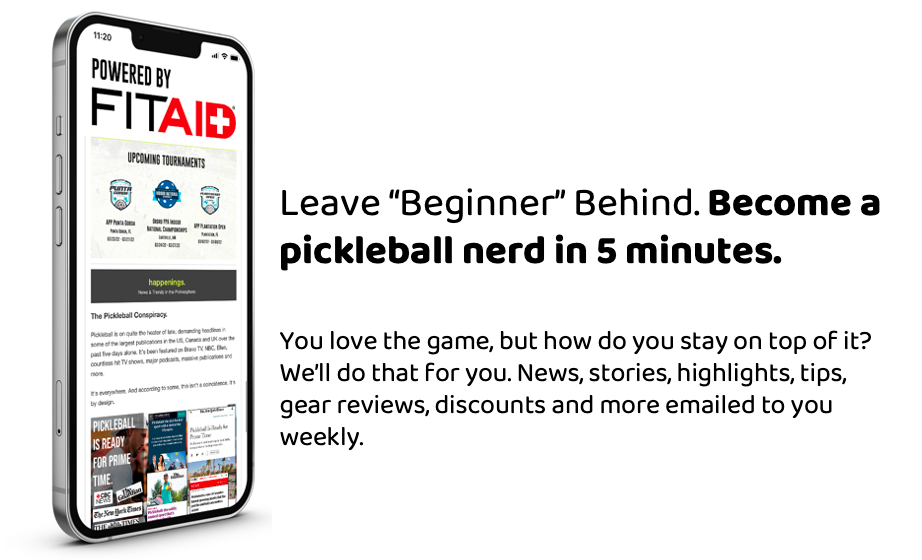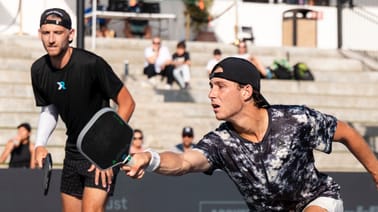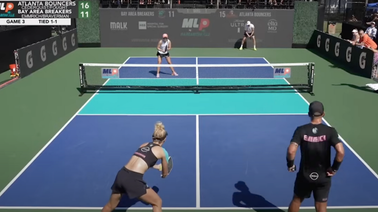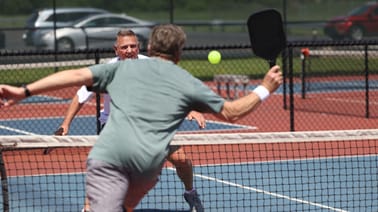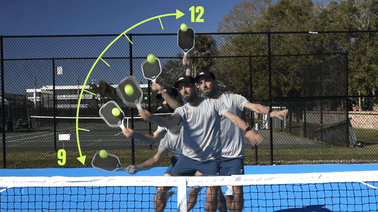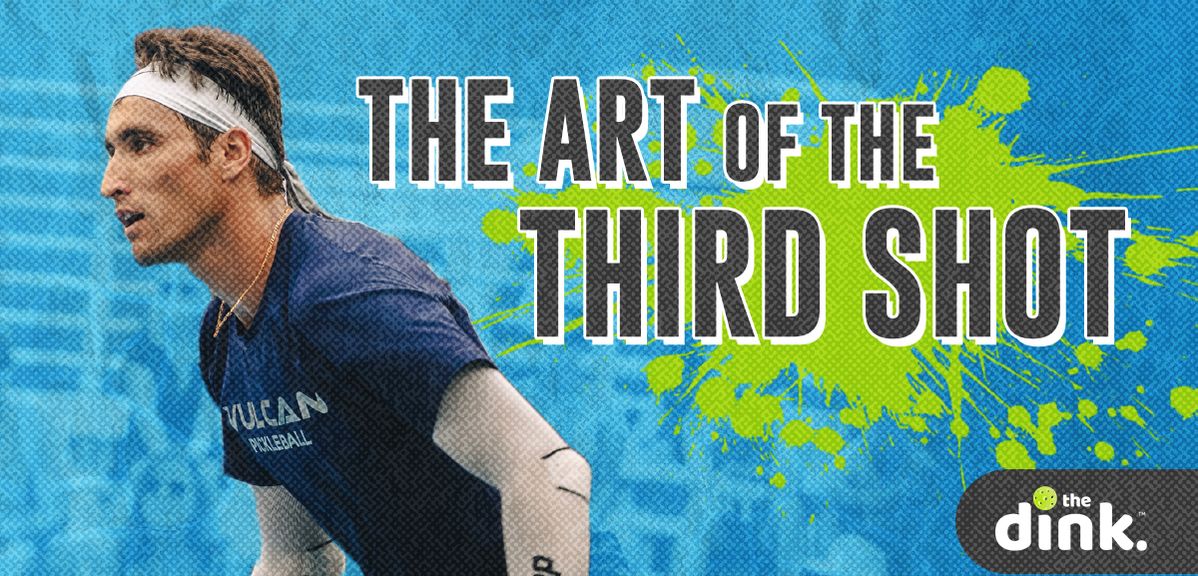
One of the first things beginners learn when coming into pickleball is the third shot. This is crucial for all players to succeed.
What is it?
There are two different types of third shots. The serving team will hit a serve and wait for the return. The next shot will be the third shot of the rally. At this point, we have two options. Drop or drive.
The goal with this shot is to get up to the non-volley zone.
Third Shot Drop
The third shot drop is a ball with height that is hit softly, with the intention of bouncing in the non-volley zone, making it unattackable for the opponent. If this is executed, the serving team will have enough time to run up to the non-volley line because of the height on the ball. This allows enough time to run up to the non-volley line.
For the tennis players: Pro player Simone Jardim describes this shot as a combination of a moon ball and a drop shot in tennis.
With that being said, we all hit bad shots from time to time. As the player attempts the third shot drop, both players need to wait and read if the ball will be low and unattackable.
If the shot has a low trajectory below the net, get your butt to the line.
If the shot is high, wait and play defense, continually trying to get the ball low and eventually getting to the non-volley line.
When the ball is hit too high and both players run up anyway, they will be icing some kind of bruise on their body later.
A good team rule for third shot drops is for the player that hits the ball to say “yes”, or “good” to signal their teammate it will be a good shot. The player hitting the ball normally knows right when they hit it, if it will be a good shot.
Same goes for a bad shot.
“No” or “watch” are common terms used to signal it is too high.
Third Shot Drive
The third shot drive is a much simpler shot that will come naturally to players.
This occurs at the same time. On that third ball, a player will hit it hard, instead of a higher, soft third shot drop.
The goal for the third shot drive is to still keep the ball low but hit it with pace.
When the drive is hit well, pop ups can occur, which leads to easy put-aways. Worst case, you get an easy fifth shot to drop, and now both players are at the non-volley line. Success.
We still have the same goal to get up to the line. Clean winners are rare in this game, so hit the drive low, and to a good spot.
Similarly, to the third shot drop, if the drive is too high, it will go out or get clobbered for a winner.
The drive is more about location, rather than velocity. Most drives that are hit with 100% effort are sailing long. The harder the swing, the less precision on the shot.
A solid 70% swing will keep the ball at a good pace and more precise, that hopefully ends up net height, or lower.
Top spin is extremely helpful with this shot. With enough top spin, the ball will start dipping below net height, forcing the opponent to lift up on the ball.
Both of these shots have pros and cons, and are effective in different situations. Let’s get into it:
Third Shot Drop Pros
- Allows sufficient time to get to the non-volley line
- Even with a ball slightly too high, there is still a chance to recover and hit a quality drop to get to the NVZ
- Rarely misses wide
- Never misses long
Third Shot Drop Cons
- Little to no pressure/fear on the opponent
- Anything up or high will be hit for a winner
Third Shot Drive Pros
- Puts pressure on the opponent to gear up for a faster hit ball
- Sets up shake and bake
- Player drives, teammate comes crashing in, looking for a pop up/anything up to put away
- Results in more clean winners.
- Opponents don’t have as much time to react to the ball, so they have to choose one or two spots on the court to protect
Third Shot Drive Cons
- Drives go wide/long more often than drops
- Even with a well hit drive, players will have to hit one or more shots to get to the NVZ
When to hit what
Third Shot Drives
- Any short returns or returns that bounce around waist high or higher
- Returns with a lot of spin
Third Shot Drops
- Deep returns
- Low returns
When there is a short return, but it bounces low, beneath net height, hit a drop.
Driving low balls forces the player to lift the ball to get it over the net, which often leads to the ball flying way out, or an easy put-away for the opponent. To see a breakdown of how the pros do it, check out pickleball statistics blog.
(PPA Tour)
Image above:
Irina Tereschenko decides to drop this ball, instead of driving.
It is a low ball, beneath net height.
No reason to force a drive and send it out of bounds.
A great general rule of thumb in pickleball is to mix it up. Keep the opponent guessing.
Hit a couple third shot drops, then throw in a third shot drive. This keeps the opponents on their toes and having to guess what you’re going to do.
We’ve said it before and we’ll say it again:
The least threatening pickleball player is the predictable one.
